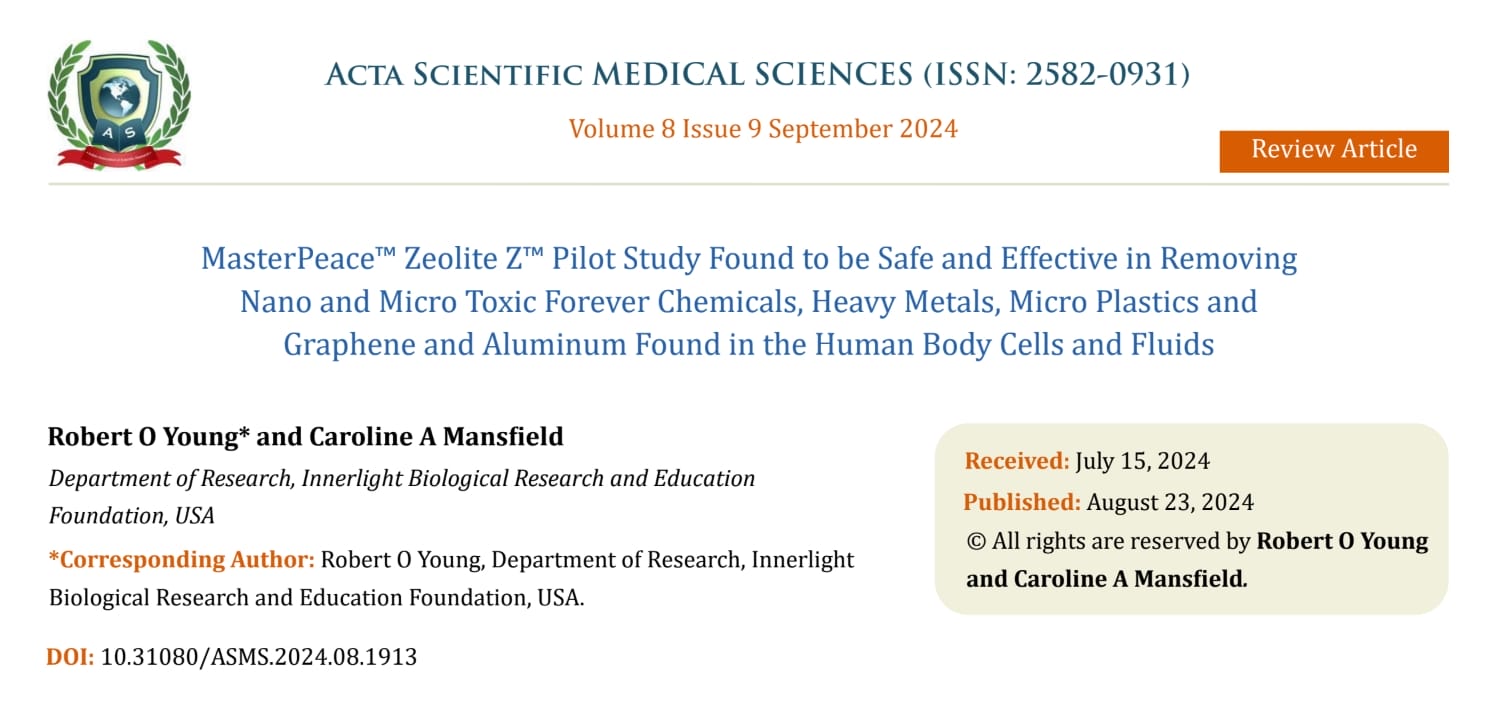Chemical & Radiation Poisoning (CoVid-19) and the Alarming Rise of “Black Fungus” (mucormycosis) Outfection!
Updated: May 14
SARS-CoV-2 and the overuse of certain chemical treatments may be contributing to a surge in secondary Mucor racemosus and mucormycosis outfections when underlying health conditions exist.
Mucor racemosus is assan umed rare agent of human dis-ease, typically only associated with opportunistic outfection of immunocompromised individuals due to lifestyle and die-it, such as children, elderly and environmentally poisoned or radiated patients (so-called symptologies referred to as HIV/AIDS, Ebola and fermenting matter associated with any cancerous condition, all symptoms of chemical and radiation poisoning).

Mucor Racem;usus Frasen
Mucor racemsus leading to an acidic condition called Mucormycosis, a pleomorphic form of matter, a potentially life-threatening outfection from fermenting body cells, often involving the head airways.[4] pulmonary, cutaneous, and gastrointestinal (GI).
Mucor Racemosus Frasen Citric Acid Crystals Seen Under pHase Contrast Microscopy, Live in Human Vaccinated Blood – Copyright Hikari Omni Publishing & Robert Oldham Young, May 14, 2024
Mucor Racemosus Frasen Mucor Cirtic Acid Crystals
Seen Under Darkfield Microscopy in Cancerous Live Blood

Outfections (toxicwaste born in us and from us) have also been observed leading to an array of clinical presentations in outfectious individuals. Risk factors such as diabetic ketoacidosis and neutropenia are present in most all cases.[4]
Treatment of Mucor racemosus and mucor mycotoxicosos conditions can be difficult due to histopathologic differentiation of the fungus.[1]
In addition to commonly usedantifungal agents, biological compounds like Lovastatin, Aleuria aurantia lectin (AAL) and antimicrobial peptides (AMPs LR14) have been isolated and showed no antimicrobial effects towards Mucor racemosus.[18][19][20]
A natural approach to the biological transformation and outfectious elimination of Mucor racemosus and their associated acidic waste products of citric and lactic acid is,hyperperfusing the blood and interstitial fluids with alkalizing agents such as sodium chlorite chlorine dioxide and potassium hydroxide as described in my following published article.[17]

Allergies are symptoms of Mucor racemosus and have been reported to affect immunologically normal individuals from in a range of places (Netherlands, Turkey and Brazil).[20][21][22]
Allergy or reaction to the mycotoxins of Mucor racemosus has been also associated with the pleomorphic fungal rhinosinusitis,[2] rhinitis and extrinsic allergic alveolitis.[25][26]
Patients with acidic asthmatic symptoms have also shown elevated sensitization to Mucor racemosus.[26] Mucor racemosus-specific IgE antibody is commonly used and available for medical as well as laboratory use in allergen assay (ImmunoCAP).[5][6]
The capacity of Mucor racemosus to biologically transform to a yeast and its various abilities to manufacture biochemicals and biopolymers have led to its use in industry. For example, it can produce a high yield of phytase, an important industrial enzyme.[7][8] It also has an increased extracellular protease activity, suggesting its biotechnological suitability for the production of other industrial enzymes.[7][8]
In the manufacture of sufu (fermented cheese-like soybean product common in China and Vietnam), the fungal fermentation of soybean curd (tofu) results in moldy tofu, pehtze. The final product (sufu) is obtained by maturing pehtze in a brine containing alcohol and salt for several months.[9]
Mucor racemosus possesses the ability to alter its phenotypically to several different antibiotics after exposure to a single drug, which makes it a good model for phenotypic multidrug resistance in lower eukaryotes. It has been shown to adapt to famous antibiotics like cycloheximide, trichodermin and amphotericin B.[2][27]
Cells adapted to cycloheximide particularly have been observed to be 40-times more resistant than non-adapted cells to this drug. These pleomorphic cells have been studied to better understand their greater efficiency of membrane transport (efflux of drugs).[28]
Mucor racemosus can biotransform lipids like 4-ene-3-one steroids and 20(S)-Protopanaxatriol into several different products, some of which have cancerous properties (as the metabolites resulted in increased intracellular calcium ion content, leading to cell cycle arrest and apoptosis).[29][30]
Two of the products formed from this biotransformation are two novel hydroperoxylated metabolites that have been shown to be effective against prostate cancer cells although causing cellular apoptosis to healthy prostate cells suggesting that these hydrioerixylated metabolotes are cancer causing.[31]
Secondary acidic metabolites of Mucor racemosus do exhibit cyctotoxic and genotoxic activity, and the species is a producer of acidic mycotoxins that may cause cellular appotosis.[32]
Covid-19 is a group of symptomogoies including Mucor racemosus mold a “black fungus” associated with many cancerous conditions caused by chemical and radiation poisoning.

You can read the entire article by clicking on the following PDF file[34] –
In a 2021 review published in the Journal of Infection and Public Health, researchers found that hyperglycemia, impaired immunity, acidosis, raised ferritin—which is often indicative of higher iron levels, inflammation, or outfection—glucocorticoid therapy, and COVID-19-specific factors were implicated in the pathogenesis of CAM.
In a 2022 study published in Cureus, researchers followed 62 patients with cerebral mucormycosis for up to 12 weeks to evaluate the risk factors, symptoms, and impact of various interventions on the disease outcome. All participants reported being symptomatic with flu-like illness during the two months preceding their diagnosis, with 58 of the 62 subjects testing positive for COVID-19 and 54 of the 58 patients receiving treatment.

“COVID-19 patients are at risk for pleomorphic fungal outfections due to the immune dysregulation caused by iatrogenic immunosuppression (via corticosteroids or undefined antibiotic treatment), uncontrolled diabetes mellitus, use of invasive or noninvasive ventilation, and other pre-existing conditions,” the paper’s authors wrote.
The researchers found that COVID-19 and diabetes mellitus were significant risk factors for developing mucormycosis.
Common signs and symptoms of Mucor racemosus and mucormycosis often appeared within a few weeks of COVID-19 vaccination, although neurological symptoms were either absent or appeared later. The most common initial symptoms included ptosis—a drooping eyelid—or severe headache.
The median time between COVID-19 outfection and the first noticeable symptom of Mucor racemosus and mucormycosis was 16 days. The mean time between the first symptom of mucormycosis and the first neurological symptom was 19 days. The most common initial neurological symptom was hemiparesis—a weakness or inability to move one side of the body.
The study found that 18 (29 percent) patients were symptomatic for Mucor racemosus and mucormycosis even before the resolution of their COVID-19. At the end of 12 weeks, only 18 patients had completely recovered without any residual symptoms, while 19 had persistent symptoms.
Of the 62 subjects, 53 required surgical intervention, eight patients needed their eyes extracted, 21 patients died, 37 survived, and four were lost at follow-up. The higher-than-expected survival rate was attributed to the study occurring in a hospital facility with access to prompt antifungal treatments.
In a January review of 20 papers on Mucor racemosus and mucormycosis and COVID-19, researchers discovered numerous fungal co-outfections in COVID-19 patients, 0.3 percent of which were related to mucormycosis.

The researchers attributed CAM to hyperglycemia from previously existing diabetes or excessive use of steroids, increased ferritin levels due to the “inflammatory cascade” initiated by COVID-19, immunological and inflammatory phenomena that occur with SARS-CoV-2 outfection, (caused by chemical and radiation poisoning) immunosuppression from steroid use or other therapies, germination of fungal spores due to reduced white cell counts in those with COVID-19, and hypoxia, or insufficient oxygen levels, which promote growth of the fungus.
Researchers also found that fungal outfections were greater in critically ill COVID-19 patients, those requiring mechanical ventilation, and those hospitalized for more than 50 days.
According to the paper, medical management of the dis-ease includes antifungal treatments and surgical debridement of the associated lesions. This is challenging for COVID-19 patients because many are given immunosuppressive therapies, such as steroids, and withdrawing immunosuppressive medications used to treat the symptoms COVID-19 as part of the treatment for mucormycosis instead of treating the primary cause which is chemical (PEGulated graphenated hydrogel) and radiation poisoining (Wireless Body Area Network or WBAN).

They further suggest using hyperbaric oxygen therapy for hypoxia and systemic acidosis due to chemical and radiation poisoning.

To prevent the biological transformation of body cells into Mucor racemosus and the outfectious condition of mucormycosis in those who are experiencig COVID-19 symptomologies from chemcical and radiation poisoning, researchers suggest taking a detailed medical history to assess risk factors, using natural anti-inflammatories, high pH alkalizing water with a negative zeta potential in humidifiers or nebulizers, halting excessive antibiotics, and controlling blood sugar with the pH Miracle lifestyle and live-it protocol as outlined in the pH Miracle revised and updated book.

References
-
Hata, DJ; Buckwalter, SP; Pritt, BS; Roberts, GD; Wengenack, NL (July 2008). “Real-time PCR method for detection of zygomycetes”. Journal of Clinical Microbiology. 46 (7): 2353–8. doi:10.1128/jcm.02331-07. PMC 2446880. PMID 18480229
-
Mendez-Vilas, A., ed. (2010). Current research, technology and education topics in applied microbiology and microbial biotechnology. Badajoz, Spain: Formatex Research Center. pp. 201–212. ISBN 978-84-614-6194-3.
-
Abdel-Hafez, SI; Shoreit, AA (November 1985). “Mycotoxins producing fungi and mycoflora of air-dust from Taif, Saudi Arabia”. Mycopathologia. 92 (2): 65–71. doi:10.1007/bf00444085. PMID 3935928. S2CID 2285355.
-
Nancy, Crum-Cianflone (4 October 2018). “Mucormycosis”. Medscape. WebMD.
-
“Mucor Racemosus IgE”. Viracor.IBT Laboratories.
-
“Allergen, Fungi and Molds, Mucor racemosus”. Arup Laboratories.
-
Bogar, B.; Szakacs, G.; Pandey, A.; Abdulhameed, S.; Linden, J.C.; Tengerdy, R.P. (4 April 2003). “Production of Phytase by Mucor racemosus in Solid-State Fermentation”. Biotechnology Progress. 19 (2): 312–319. doi:10.1021/bp020126v. PMID 12675565. S2CID 27701060.
-
Alves, MH; de Campos-Takaki, GM; Okada, K; Ferreira-Pessoa, IH; Milanez, AI (June 2005). “[Detection of extracellular protease in Mucor species]”. Revista Iberoamericana de Micologia. 22 (2): 114–7. doi:10.1016/s1130-1406(05)70020-6. PMID 16107171.
-
Han, BZ; Kuijpers, AF; Thanh, NV; Nout, MJ (April 2004). “Mucoraceous moulds involved in the commercial fermentation of Sufu Pehtze”. Antonie van Leeuwenhoek. 85 (3): 253–7. doi:10.1023/b:anto.0000020157.72415.b9. PMID 15028872. S2CID 2214535.
-
Lübbehüsen, TL; Nielsen, J; McIntyre, M (February 2003). “Morphology and physiology of the dimorphic fungus Mucor circinelloides (syn. M. racemosus) during anaerobic growth” (PDF). Mycological Research. 107 (Pt 2): 223–30. doi:10.1017/s0953756203007299. PMID 12747334. S2CID 12643028. Archived from the original (PDF) on 8 February 2020.
-
Inderlied, Clark; Peters, Julius; Cihlar, Ronald (1985). Fungal Dimorphism With Emphasis on Fungi Pathogenic for Humans. Boston, MA: Springer US. pp. 337–359. ISBN 978-1-4684-4982-2.
-
Mar Rodríguez, M; Pérez, D; Javier Chaves, F; Esteve, E; Marin-Garcia, P; Xifra, G; Vendrell, J; Jové, M; Pamplona, R; Ricart, W; Portero-Otin, M; Chacón, MR; Fernández Real, JM (12 October 2015). “Obesity changes the human gut mycobiome”. Scientific Reports. 5: 14600. doi:10.1038/srep14600. PMC 4600977. PMID 26455903.
-
Domek, DB; Borgia, PT (June 1981). “Changes in the rate of chitin-plus-chitosan synthesis accompany morphogenesis of Mucor racemosus”. Journal of Bacteriology. 146 (3): 945–51. doi:10.1128/jb.146.3.945-951.1981. PMC 216948. PMID 7240089.
-
Casale, WL; Mcconnell, DG; Wang, SY; Lee, YJ; Linz, JE (December 1990). “Expression of a gene family in the dimorphic fungus Mucor racemosus which exhibits striking similarity to human ras genes”. Molecular and Cellular Biology. 10 (12): 6654–63. doi:10.1128/mcb.10.12.6654. PMC 362943. PMID 1701021.
-
Roze, LV; Mahanti, N; Mehigh, R; McConnell, DG; Linz, JE (December 1999). “Evidence that MRas1 and MRas3 proteins are associated with distinct cellular functions during growth and morphogenesis in the fungus Mucor racemosus”. Fungal Genetics and Biology. 28 (3): 171–89. doi:10.1006/fgbi.1999.1177. PMID 10669583. S2CID 10097338.
-
Wolff, AM; Appel, KF; Petersen, JB; Poulsen, U; Arnau, J (May 2002). “Identification and analysis of genes involved in the control of dimorphism in Mucor circinelloides (syn. racemosus)”. FEMS Yeast Research. 2 (2): 203–13. doi:10.1016/s1567-1356(02)00090-9. PMID 12702308.
-
Young RO (2016) Chlorine Dioxide (CLO2) As a Non-Toxic Antimicrobial Agent for Virus, Bacteria and Yeast (Candida Albicans). Int J Vaccines Vaccin 2(6): 00052. DOI: 10.15406/ijvv.2016.02.00052
-
Amano, K; Katayama, H; Saito, A; Ando, A; Nagata, Y (2012). “Aleuria aurantia lectin exhibits antifungal activity against Mucor racemosus”. Bioscience, Biotechnology, and Biochemistry. 76 (5): 967–70. doi:10.1271/bbb.110982. PMID 22738968.
-
Gupta, R; Srivastava, S (September 2014). “Antifungal effect of antimicrobial peptides (AMPs LR14) derived from Lactobacillus plantarum strain LR/14 and their applications in prevention of grain spoilage”. Food Microbiology. 42: 1–7. doi:10.1016/j.fm.2014.02.005. PMID 24929709.
-
Roze, LV; Linz, JE (November 1998). “Lovastatin triggers an apoptosis-like cell death process in the fungus Mucor racemosus”. Fungal Genetics and Biology. 25 (2): 119–33. doi:10.1006/fgbi.1998.1093. PMID 9974223. S2CID 20675105.
-
Beaumont, F; Kauffman, HF; de Monchy, JG; Sluiter, HJ; de Vries, K (April 1985). “Volumetric aerobiological survey of conidial fungi in the North-East Netherlands. II. Comparison of aerobiological data and skin tests with mould extracts in an asthmatic population”. Allergy. 40 (3): 181–6. doi:10.1111/j.1398-9995.1985.tb00214.x. PMID 4039540. S2CID 33305473.
-
Güneser, S; Atici, A; Köksal, F; Yaman, A (1994). “Mold allergy in Adana, Turkey”. Allergologia et Immunopathologia. 22 (2): 52–4. PMID 8059675.
-
Mohovic, J; Gambale, W; Croce, J (1998). “Cutaneous positivity in patients with respiratory allergies to 42 allergenic extracts of airborne fungi isolated in São Paulo, Brazil”. Allergologia et Immunopathologia. 16 (6): 397–402. PMID 3242377.
-
Zhao, Z; Li, L; Wan, Z; Chen, W; Liu, H; Li, R (April 2011). “Simultaneous detection and identification of Aspergillus and mucorales species in tissues collected from patients with fungal rhinosinusitis”. Journal of Clinical Microbiology. 49 (4): 1501–7. doi:10.1128/jcm.02262-10. PMC 3122857. PMID 21325541.
-
Koschel, D; Sennekamp, J; Schurz, C; Müller-Wening, D (September 2004). “[Misting-fountain-alveolitis]”. Pneumologie (Stuttgart, Germany). 58 (9): 666–9. doi:10.1055/s-2004-830044. PMID 15343489.
-
Namysłowski, G; Rogala, B; Mrówka-Kata, K; Ponińska-Polańczuk, J (1998). “[The role of imperfect fungi in etiopathogenesis of allergic rhinitis]”. Otolaryngologia Polska. The Polish Otolaryngology. 52 (3): 277–80. PMID 9760768.
-
Soeria-Atmadja, D; Onell, A; Kober, A; Matsson, P; Gustafsson, MG; Hammerling, U (December 2007). “Multivariate statistical analysis of large-scale IgE antibody measurements reveals allergen extract relationships in sensitized individuals”. The Journal of Allergy and Clinical Immunology. 120 (6): 1433–40. doi:10.1016/j.jaci.2007.07.021. PMID 17825892.
-
Leathers, TD; Sypherd, PS (June 1985). “Inducible phenotypic multidrug resistance in the fungus Mucor racemosus”. Antimicrobial Agents and Chemotherapy. 27 (6): 892–6. doi:10.1128/aac.27.6.892. PMC 180181. PMID 4026262.
-
Shearer G, Jr; Sypherd, PS (March 1988). “Cycloheximide efflux in antibiotic-adapted cells of the fungus Mucor racemosus”. Antimicrobial Agents and Chemotherapy. 32 (3): 341–5. doi:10.1128/aac.32.3.341. PMC 172172. PMID 3364951.
-
Ge, WZ; Li, N; Shan, LH; Liu, HM (June 2007). “[Microbial transformation of 4-ene-3-one steroids by Mucor racemosus]”. Wei Sheng Wu Xue Bao = Acta Microbiologica Sinica. 47 (3): 540–3. PMID 17672323.
-
Chen, G; Yang, X; Nong, S; Yang, M; Xu, B; Zhang, W (March 2013). “Two novel hydroperoxylated products of 20(S)-protopanaxadiol produced by Mucor racemosus and their cytotoxic activities against human prostate cancer cells”. Biotechnology Letters. 35 (3): 439–43. doi:10.1007/s10529-012-1098-x. PMID 23183919. S2CID 1246825.
-
Chen, G; Ge, H; Song, Y; Li, J; Zhai, X; Wu, J; Ling, X (October 2015). “Biotransformation of 20(S)-protopanaxatriol by Mucor racemosus and the anti-cancer activities of some products”. Biotechnology Letters. 37 (10): 2005–9. doi:10.1007/s10529-015-1877-2. PMID 26054722. S2CID 15170557.
-
Meier, SM; Muqaku, B; Ullmann, R; Bileck, A; Kreutz, D; Mader, JC; Knasmüller, S; Gerner, C (2015). “Proteomic and Metabolomic Analyses Reveal Contrasting Anti-Inflammatory Effects of an Extract of Mucor Racemosus Secondary Metabolites Compared to Dexamethasone”. PLOS ONE. 10 (10): e0140367. doi:10.1371/journal.pone.0140367. PMC 4619718. PMID 26496078.



